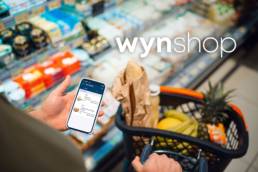ARTICLE
The Balanced Scorecard of Fulfillment
Fulfillment and picking efficiency are critical to a grocer’s online profitability, but maximizing Units picked Per Hour (UPH) should not be the sole objective, especially if it leads to sacrifices in quality and overall customer experience.
An industry-leading store picking solution¹ is an important tool to increase picking speed and efficiency, however implementing the right software product(s) is just one pillar of an overall program, with equal focus needed on associate productivity and store format considerations.

Associate Productivity
Two key focus areas for associates include labor specialization and gamification (or more broadly, incentives to align associates to company targets). Specialization of labor allows associates to familiarize themselves with a particular department of the store, and also allows Store Managers to put their most productive associates in departments that are typically the most complex and time-consuming, such as produce. Specialization in this manner serves as a means to simultaneously improve in three key areas around fulfillment:
- increasing picking efficiency with the associates having intimate knowledge of department and shelf positions;
- increasing the quality of shopping, with a deeper understanding of the products;
- and finally increasing substitution effectiveness by understanding customer preferences, appropriate substitutes, and the likelihood of a given substitute being acceptable.
Associate Incentivization and/or gamification is a strategy that can be used to stimulate friendly competition for associates, while also helping to further improve picking rates and efficiency, ultimately aligning the staff with company targets. Wynshop customers have reported that both inter-store and intra-store competitions between associates have been positively correlated with measurable increases in pick rates.
The layout and planning of the physical store is the second broad area of focus for a grocer to understand, plan, and optimize how picking time is spent on the floor. First, when initially setting up picking sectors or zones inside of a store, it may be tempting to create a one-to-one relationship between sectors and individual departments or aisles. While this approach has the advantage of simplicity, it falls apart when trying to optimize one’s labor and tote usage. On the other hand, having too few sectors leads to products in physically different locations needing to be picked sequentially, thereby causing inefficiencies by wasting an associate’s time on the floor. Through data analysis and utilization of industry best practices, one is able to arrive at an optimal number of sectors to maximize tote usage and labor.
Second, store layouts can prove to be another challenge that limits the efficiency of pickers. While large-scale format changes (such as moving entire departments) are not typically realistic, having a better understanding of shopping basket representation by department/sector can empower better decision-making in terms of how pickers are best utilized and an optimal pick path. For example, if the Health & Beauty section of a large-footprint store is located on the opposite side of the produce section but represents less than 10% of a typical basket, it’s likely to be sub-optimal for a single picker to visit both departments as part of their picking wave.
Third, pick-path optimization is a powerful mechanism by which a planogram is fed into an AI-engine along with sector and order data to optimize the path that associates should follow in completing a given picking wave.
As described above, an overall program for in-store fulfillment optimization includes three main pillars: software, associates, and the physical store. Similarly, the program is best run through measuring and optimizing a variety of focus areas rather than any single metric. Wynshop customers utilize a balanced scorecard of KPIs rather than a single measure such as UPH. The scorecard intends to provide a holistic view of the fulfillment business and includes metrics such as fulfillment on time, product availability, freshness and quality, missing items, customer feedback, returns/refunds, and more.
Implementing a multi-faceted program for fulfillment and measuring its health via a balanced scorecard are the industry best practices for running a successful online fulfillment business.
¹Wynshop Fulfillment customers report up to three times the industry average pick rates, with up to 150 UPH.


